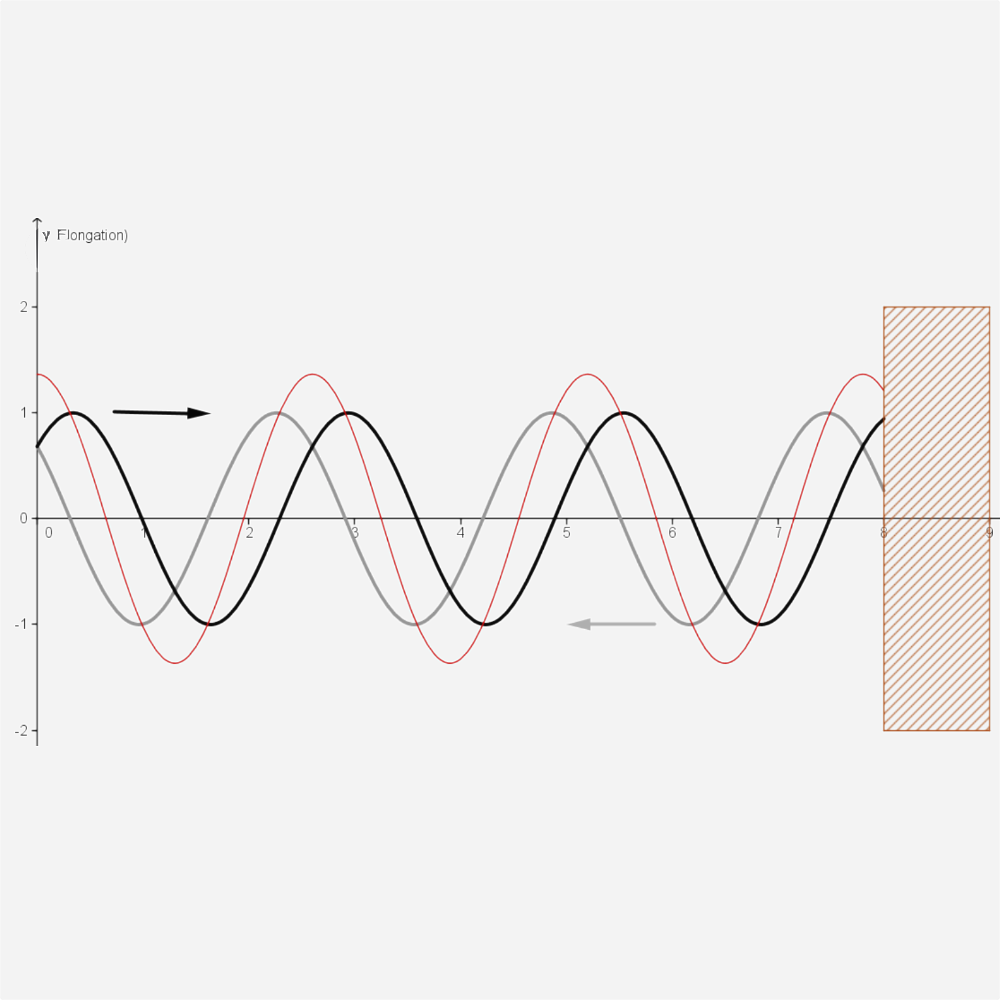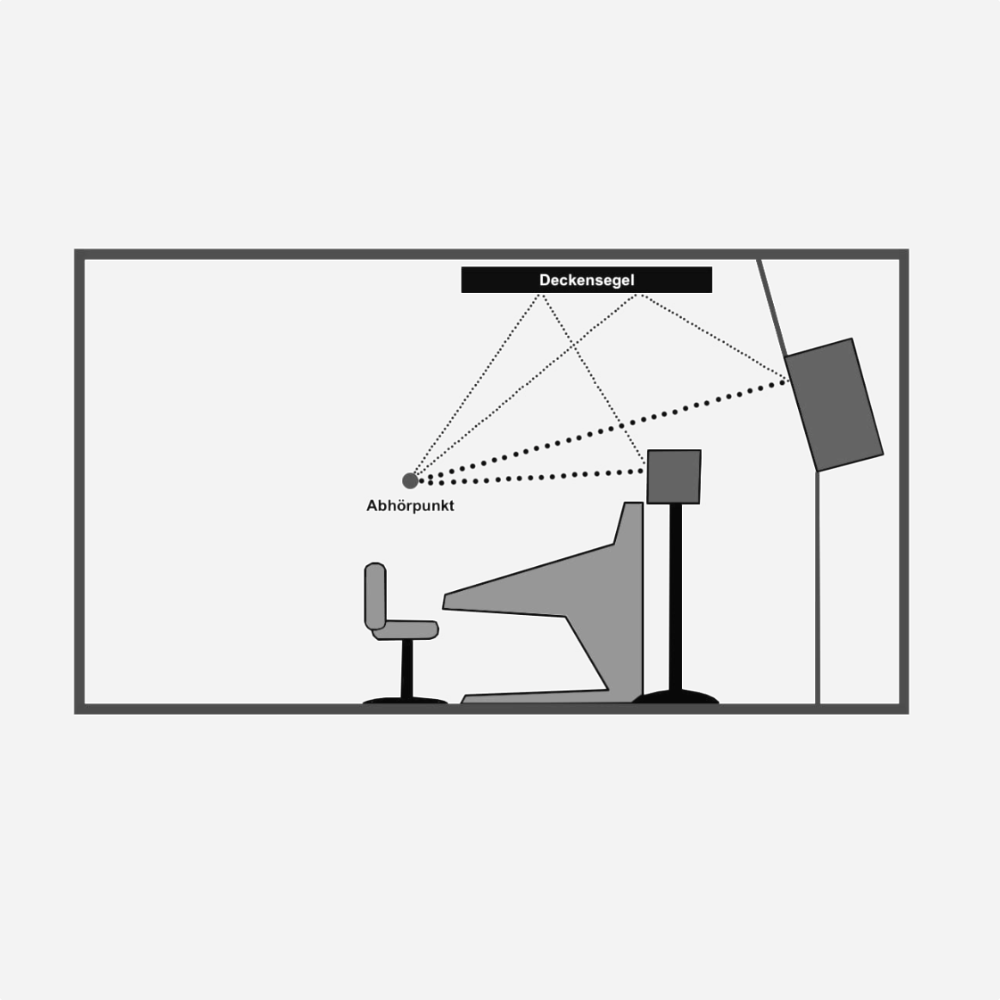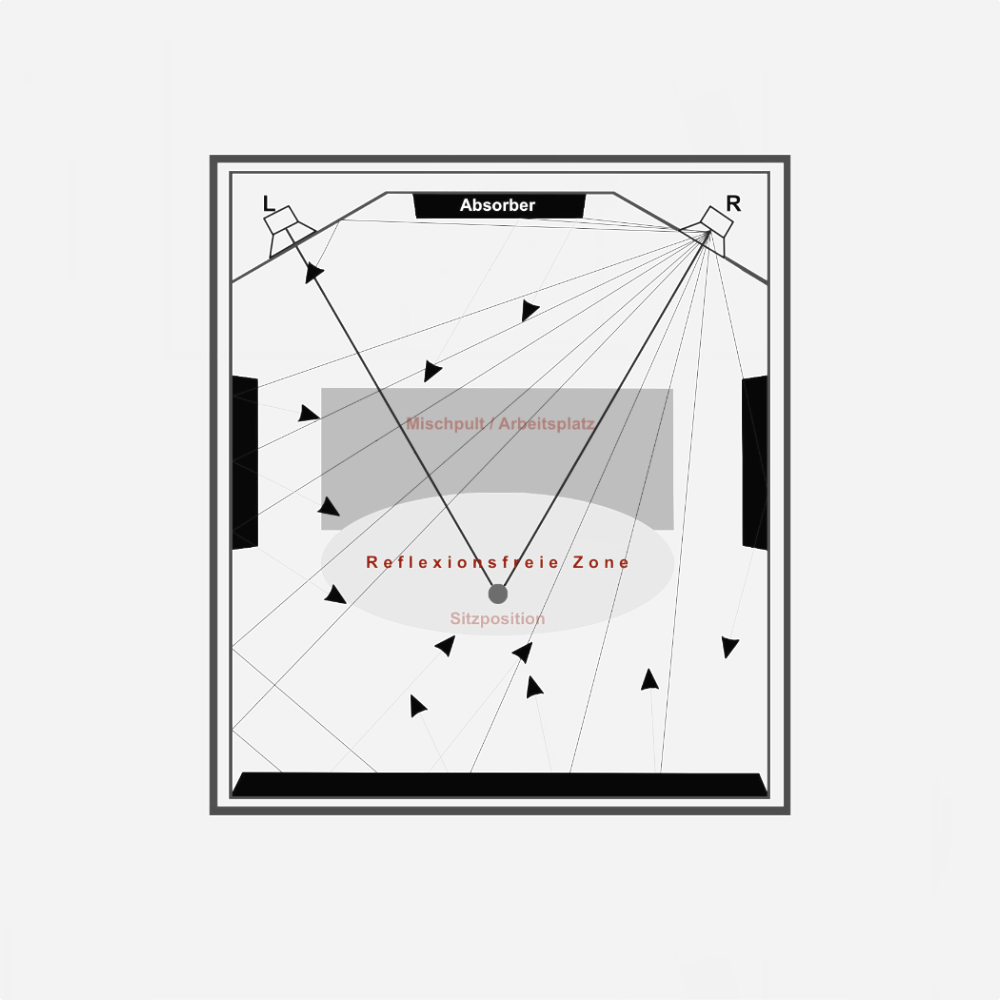Standing waves and room modes
Among very unpleasant characteristics of most rooms are undesirable resonances in the bass range. These resonances are called "standing waves", "room modes" or simply "modes" for short.
Standing waves occur when a sound wave is reflected between two walls in such a way that identical waveforms overlap.
The vibration emitted by the sound source is reflected back and forth by the walls at different times. As a result, the sound hitting the wall overlaps with the reflected sound. If the wavelength of the vibration is in an unfavorable ratio to the room dimensions, the sound wave will add up or cancel out at different points in the room (see: blogpost "Propagation of sound", topic Interference).
Standing waves are best combated with low-frequency absorption. If there is no reflection, there can be no unwanted interference.
In addition to standing waves which arise one-dimensionally between two walls, there are also standing waves which are reflected over several room surfaces and arise two- or three-dimensionally in the room. They can be distinguished into:
- axial modes (one-dimensional modes): occur between two boundary surfaces
- tangential modes (two-dimensional modes): occur between four boundary surfaces
- oblique modes (three-dimensional modes): occur between six boundary surfaces


